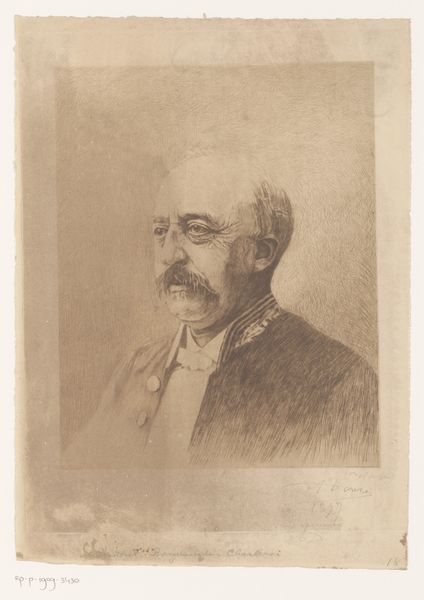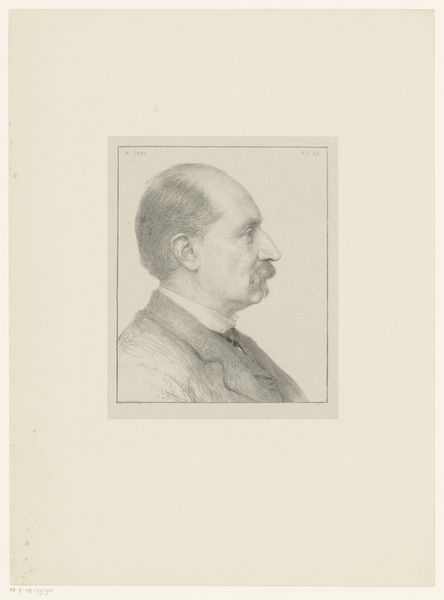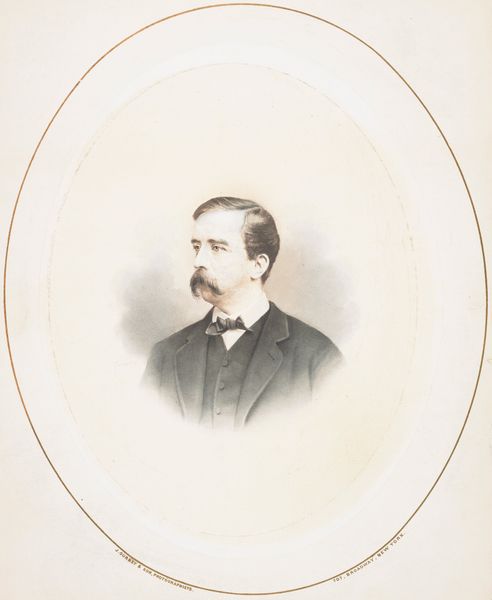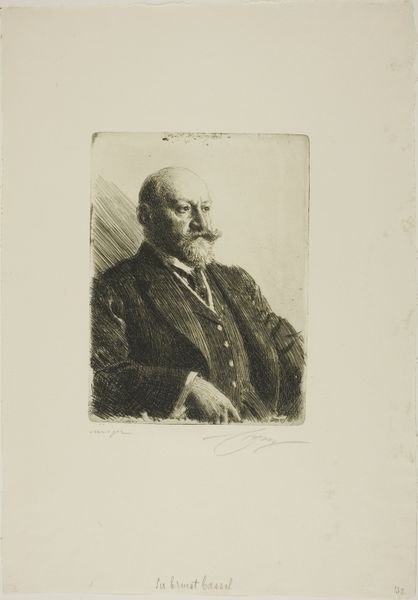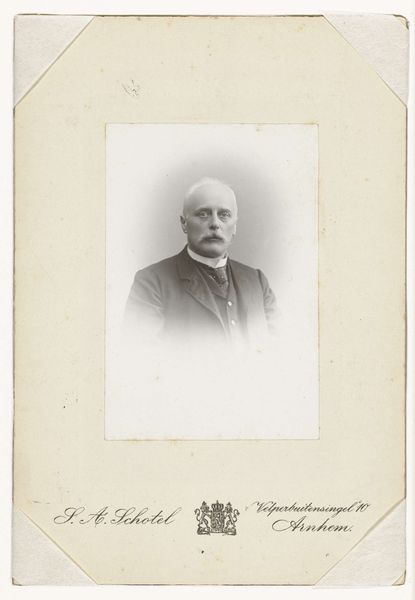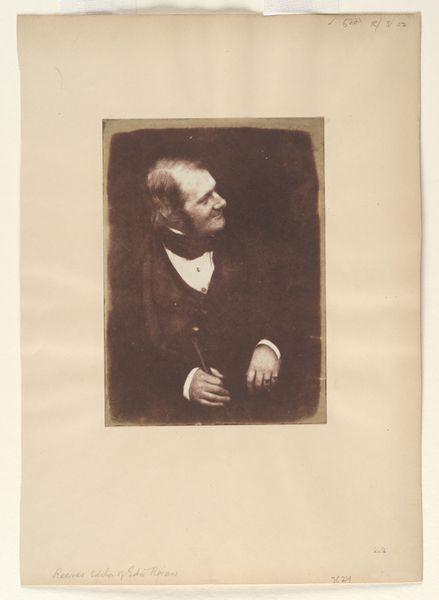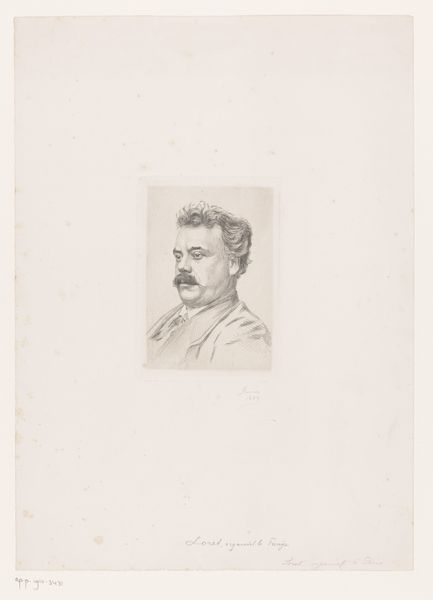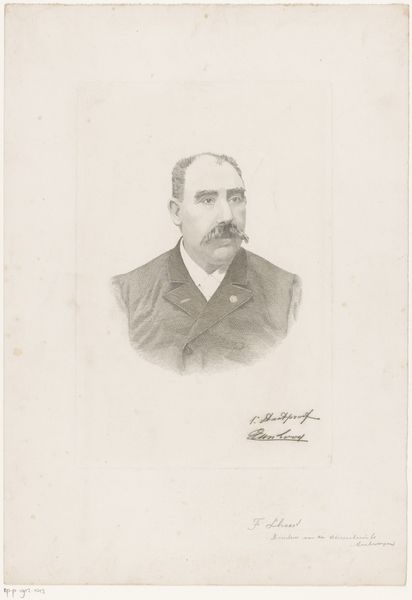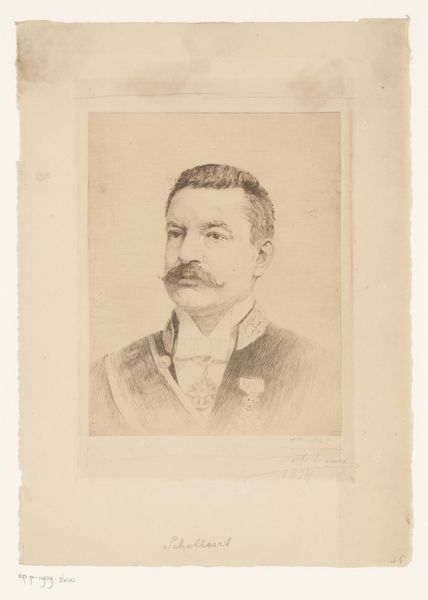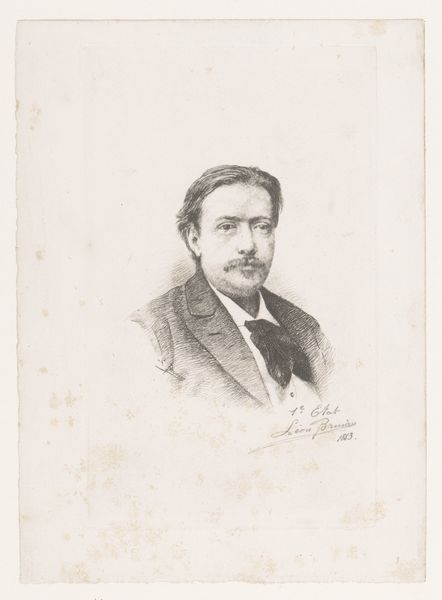
Portret van Jules Audent, burgemeester van Charleroi, driekwart naar links 1897
0:00
0:00
drawing, print, graphite
#
portrait
#
pencil drawn
#
drawing
#
light pencil work
#
16_19th-century
# print
#
charcoal drawing
#
charcoal art
#
pencil drawing
#
19th century
#
graphite
Dimensions: height 308 mm, width 238 mm
Copyright: Rijks Museum: Open Domain
Editor: This is "Portrait of Jules Audent, Mayor of Charleroi," a drawing by Auguste Danse from 1897, now at the Rijksmuseum. I’m immediately drawn to the detail achieved with what looks like graphite or charcoal. What can you tell me about this work? Curator: Notice how the artist employs seemingly simple materials, graphite or charcoal, to depict a powerful political figure. This challenges the hierarchy of artistic materials. How does the choice of drawing, instead of painting, potentially democratize the representation of power? Editor: That’s an interesting point. It's less lavish, more accessible maybe? I hadn’t thought of that. The labor seems more evident too, compared to something like an oil painting... all those individual lines. Curator: Precisely. We must consider the artist’s hand and the act of drawing itself. How does the process of layering graphite, creating tone and form, contribute to the portrait’s meaning? And think about how prints, easily reproduced, circulate imagery. Editor: So, the work's value comes not just from who it depicts but also from how it was made and disseminated. That completely changes my understanding. I always thought drawing was just a "preliminary" medium. Curator: Many assume that about drawing and printmaking. But this is an artwork that actively resists the traditional elevation of painting. The artist's choice forces us to see portraiture, and even political power, through the lens of material production and consumption. This piece demonstrates that even seemingly traditional forms like portraiture can offer spaces for material critique. Editor: I see, by highlighting the medium and method, it provides insight on how it might fit within production processes and consumption patterns during that time period, thus conveying much more. I appreciate this insight. Thank you. Curator: It was my pleasure. It always helps to consider what gets made and why.
Comments
No comments
Be the first to comment and join the conversation on the ultimate creative platform.
